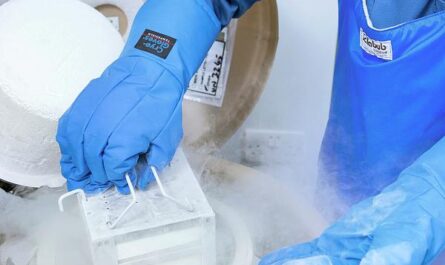Cleanrooms are controlled environments that are constructed and used to minimize contamination by dust, airborne microbes, and other particles. Cleanroom consumables play a crucial role in maintaining these contamination-controlled environments. From wipes and apparel to gloves and air filters, the right consumables are essential for industries like pharmaceuticals, medical devices, electronics, and more where exacting cleanliness standards are required.
Wipes and Disinfectants
Wipes and disinfectants are among the most commonly used cleanroom consumables. Various types of wipes such as isopropyl alcohol wipes, acetone wipes, surface wipes and general-purpose wipes are available for cleaning surfaces, tools, machinery and other equipment within the cleanroom. Disinfectant wipes are also used for disinfecting high-touch surfaces to eliminate microbes. These wipes come pre-moistened with appropriate disinfecting agents like hydrogen peroxide, peracetic acid or sodium hypochlorite to kill bacteria, fungi and viruses. Cleanroom wipes play a vital role in the removal of particles and microbes from surfaces through repeated wiping to maintain prescribed cleanliness levels.
Apparel and Headcovers
Protective apparel like bouffant hats, shoe covers, coveralls, lab coats and face masks form a critical barrier against contamination ingress into the cleanroom. These are meant to cover and protect clothing, hair, shoes and skin which could otherwise slough off particles or microbes into the controlled environment. Cleanroom apparel comes in varying classifications such as ISO 5, ISO 7 and ISO 8 depending on the level of coverage and filtration required for the designated cleanroom. Many cleanrooms also require face masks, gloves and full-body suits made of synthetic materials that do not shed fibers or particles. Choosing the right apparel is important to prevent contamination while also providing comfort to personnel working for long hours in the cleanroom.
Gloves
Much like apparel, cleanroom gloves are indispensable in maintaining personnel and product safety. Cleanroom gloves are made of latex, nitrile, vinyl or neoprene and come unpowdered to prevent contamination from skin flakes or powder residues. The choice of glove material depends on factors like toxicological requirements, durability needs and risk ofpuncture. Rough surfaces may demand puncture-proof gloves while sterility assurance areas may need sterile gloves packaged individually. Gloves should fit properly and be routinely checked for leaks to prevent contaminants from entering the cleanroom on hands or through damaged gloves. Their consistent use plays a key role in reducing bioburden in sterile manufacturing areas.
Air Filters
Purified air is essential to maintaining cleanroom environments free of particulate contamination. HEPA and ULPA filters installed in cleanroom HVAC systems filter incoming air to remove 99.97% or 99.999% of particles 0.3 microns or larger. Some critical cleanrooms also require additional in-line filtration for specialized applications like aseptic processing. Filter selection and regular replacement protects against ingress of microbes and particles via the ventilation system. Pressure differentials maintained through the HVAC system also ensure air flows only from cleaner to less clean zones. Together, proper air filtration and control of airflow dynamics are critical for controlling contamination within production cleanrooms.
Monitoring Equipment
Various types of monitoring equipment help measure, control, and document cleanroom environmental conditions in real-time. Airborne particle counters quantify particulate levels periodically. Surface particle counters check surfaces for residue post cleaning. Temperature and humidity monitors maintain appropriate process conditions. Airflow gauges verify unidirectional flow is being achieved through pressure differentials. Monitoring equipment facilitates meeting appropriate ISO or regulatory cleanroom classifications. Data loggers help track and trend critical cleanroom parameters, enabling timely corrective actions when deviations occur. Overall, reliable monitoring contributes to greater control and assurance of a contamination-free manufacturing environment.
Flooring and Walls
Cleanroom flooring is slip-resistant to avoid particles generated from falls or scrapes. Seamless vinyl is a common choice given its durability and ease of cleaning. Flooring should slope gentle towards drains to facilitate drainage of cleaning fluids and prevent pooling. Walls need smooth, hard surfaces that can withstand repeated cleaning and sanitize smoothly. Stainless steel or seamless epoxy finishes are suitable wall material choices. Grout-free flooring and seamless wall construction helps avoid particle retention or growth of microbes in cracks and crevices. Properly installed flooring and wall coverings are essential for easy maintenance of contamination-controlled cleanroom facilities.
Cleanroom consumables ensure purity, quality, and safety are maintained within critical manufacturing environments. From apparel to air filters, monitoring equipment to mop heads – each consumable plays an indispensable role in preventing contamination. Selecting appropriate cleanroom consumables suitable for the intended application and replacing them routinely helps sustain optimal cleanroom conditions. This supports precision operations across industries in adhering to the exacting quality and sterility standards mandated for sensitive products and manufacturing processes. Careful planning and management of cleanroom consumables is thus imperative for businesses seeking operational excellence within contamination-controlled environments.




